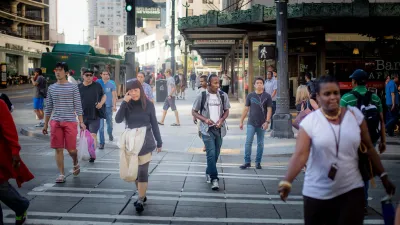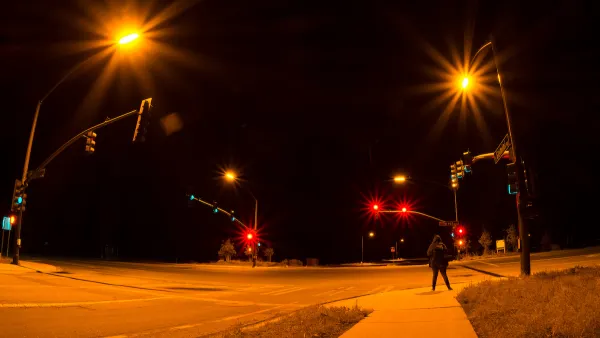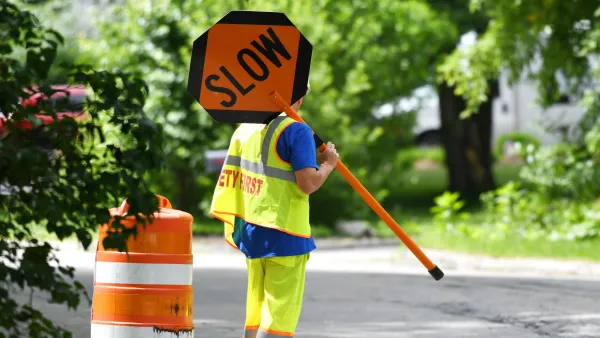Rather than looking at current pedestrian counts, the city will use a newly developed set of 'pedestrian generators' to evaluate the need for new painted crosswalks.

As Ryan Packer writes in The Urbanist, Seattle's Department of Transportation has just made a policy change that moves the city away from using pedestrian counts to justify painting new crosswalks, a move that pedestrian advocates praise as a step in shifting the focus of road design to people walking and biking.
"In the new policy, SDOT uses the concept of 'pedestrian generators,' or amenities automatically assumed to generate pedestrian traffic, to create a framework where enhanced crossings are 'consistently provided' along arterial streets where there are certain 'Tier 1' generators." Tier 1 'pedestrian generators' include trail and greenway crossings, school zones, and some transit stops. "There are also 'Tier 2' pedestrian generators, which are '[b]ased on best engineering judgement, enhanced pedestrian crossings should be considered for proactive installation' near these facilities." Second-tier generators include entrances to parks; community facilities like libraries, community centers, and hospitals; "facilities serving high volumes of vulnerable populations;" and transit stops that don't qualify under Tier 1.
Tier 1 sites will likely receive new crosswalks right away, while Tier 2 locations might need additional analysis to determine a true need.
According to the article, "SDOT’s policy memo states that this change will 'enabl[e] enhanced pedestrian crossings to be planned and constructed concurrently with transit facilities and development anticipated to generate pedestrian demand.'"
FULL STORY: SDOT Adopts Policy Change to Allow More Marked Crosswalks Without Red Tape

National Parks Layoffs Will Cause Communities to Lose Billions
Thousands of essential park workers were laid off this week, just before the busy spring break season.

Retro-silient?: America’s First “Eco-burb,” The Woodlands Turns 50
A master-planned community north of Houston offers lessons on green infrastructure and resilient design, but falls short of its founder’s lofty affordability and walkability goals.

Delivering for America Plan Will Downgrade Mail Service in at Least 49.5 Percent of Zip Codes
Republican and Democrat lawmakers criticize the plan for its disproportionate negative impact on rural communities.

Test News Post 1
This is a summary

Test News Headline 46
Test for the image on the front page.

Balancing Bombs and Butterflies: How the National Guard Protects a Rare Species
The National Guard at Fort Indiantown Gap uses GIS technology and land management strategies to balance military training with conservation efforts, ensuring the survival of the rare eastern regal fritillary butterfly.
Urban Design for Planners 1: Software Tools
This six-course series explores essential urban design concepts using open source software and equips planners with the tools they need to participate fully in the urban design process.
Planning for Universal Design
Learn the tools for implementing Universal Design in planning regulations.
EMC Planning Group, Inc.
Planetizen
Planetizen
Mpact (formerly Rail~Volution)
Great Falls Development Authority, Inc.
HUDs Office of Policy Development and Research
NYU Wagner Graduate School of Public Service




























